Appearances, dimensions and connections
The card, which is very light with 282 grams, is only 15.5 cm long, 10.5 cm high and occupies exactly two slots with a depth of 3.5 cm. You don't have to be afraid of a backplate, because there are none.
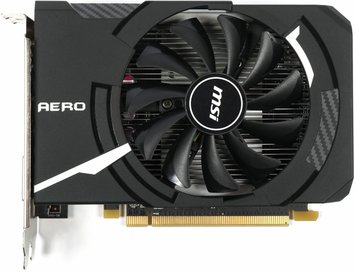 |
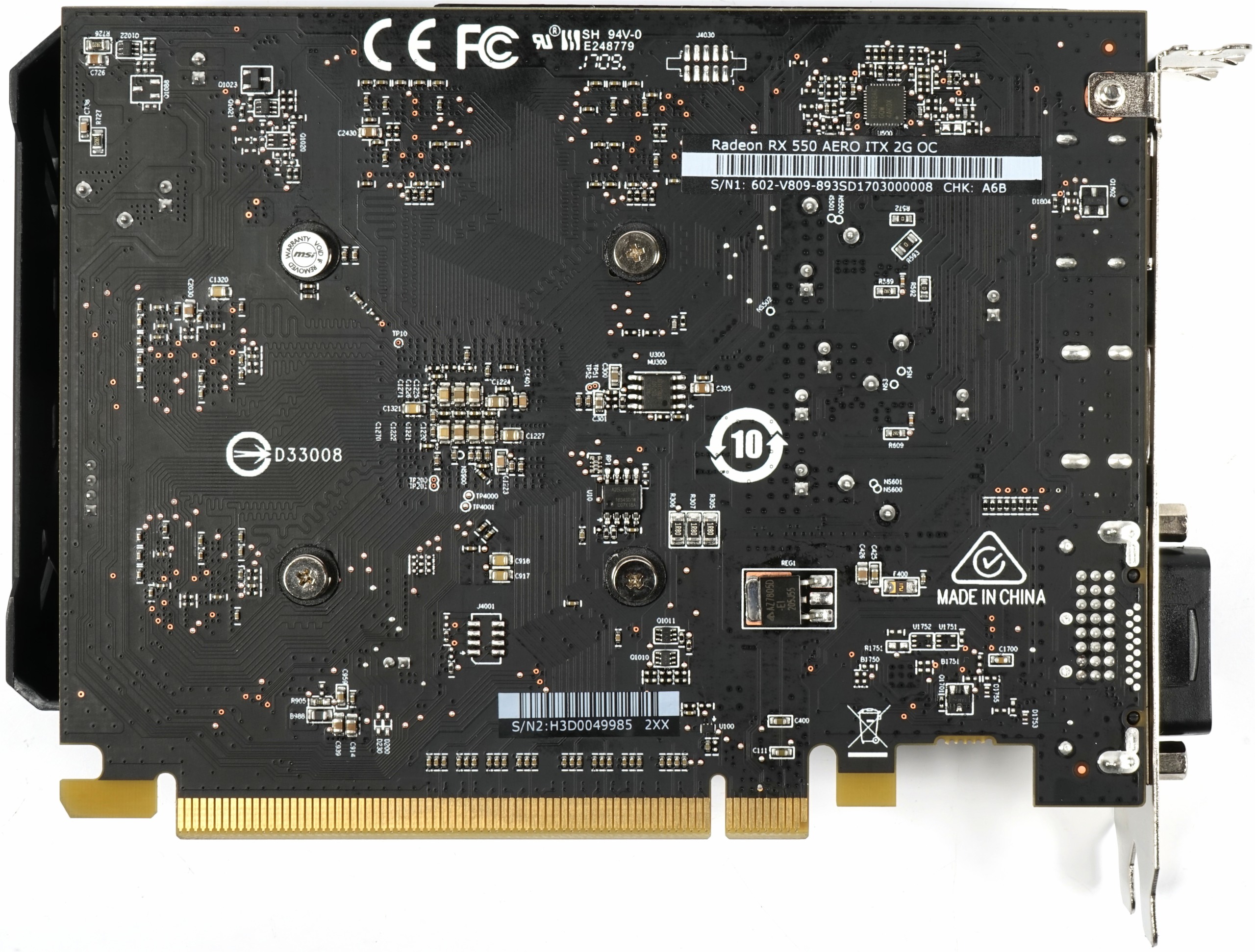 |
The cover is made of simple plastic, but the injection moulding has been quite effort-making and in addition to the pleasantly roughened surface, a few optical effects have been incorporated into the injection mould. What looks like light metal applications has only been pressed over the mold and printed with silver matt lacquer. However, you have to look twice to notice the "fraud".

The top gratefully accepts this design and also wears an identically printed MSI lettering. An external power supply connection, on the other hand, cannot be found. The underside is downright boring, but that doesn't bother you, because you don't see it when the card is inserted.

The back and slot panel are reasonably open, which suits the horizontally aligned cooling rib design. Only with the variety of connections one has saved neatly, each one a dual-link DVI-D-connection, once HDMI 2.0 and a DisplayPort must be enough.
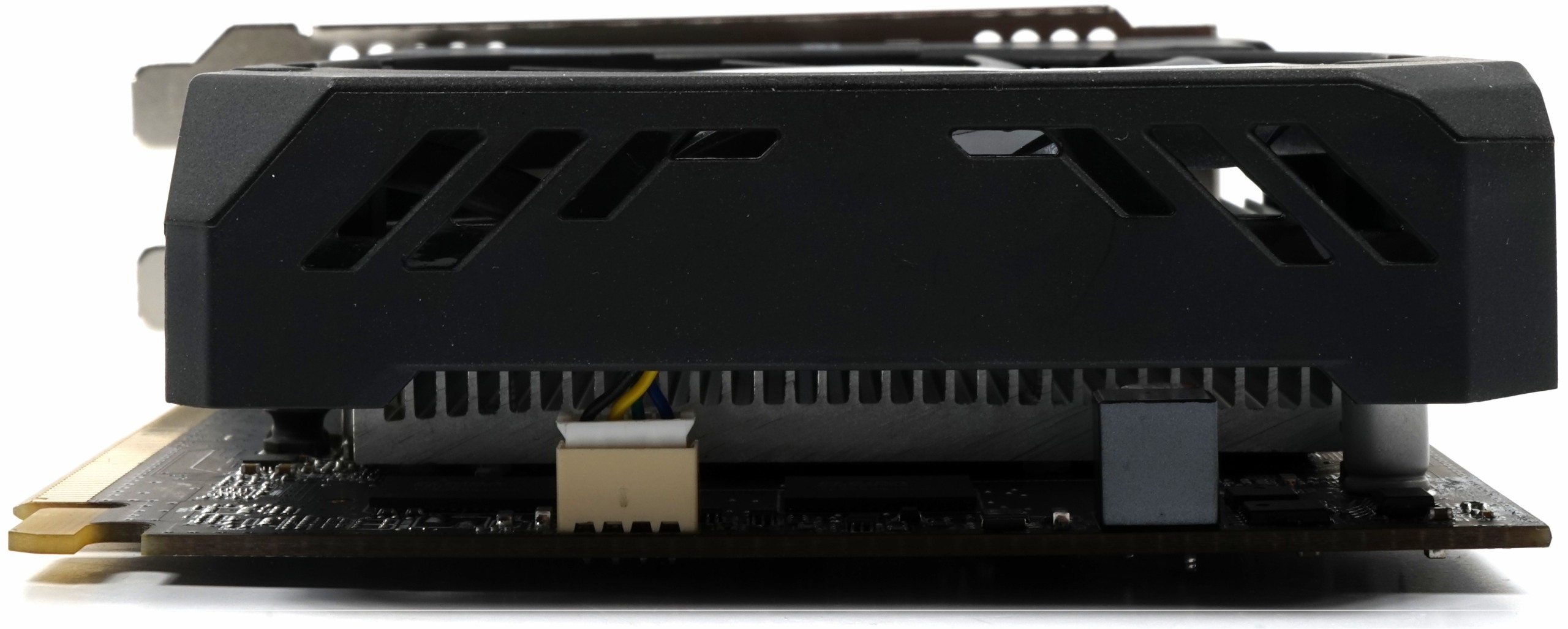 |
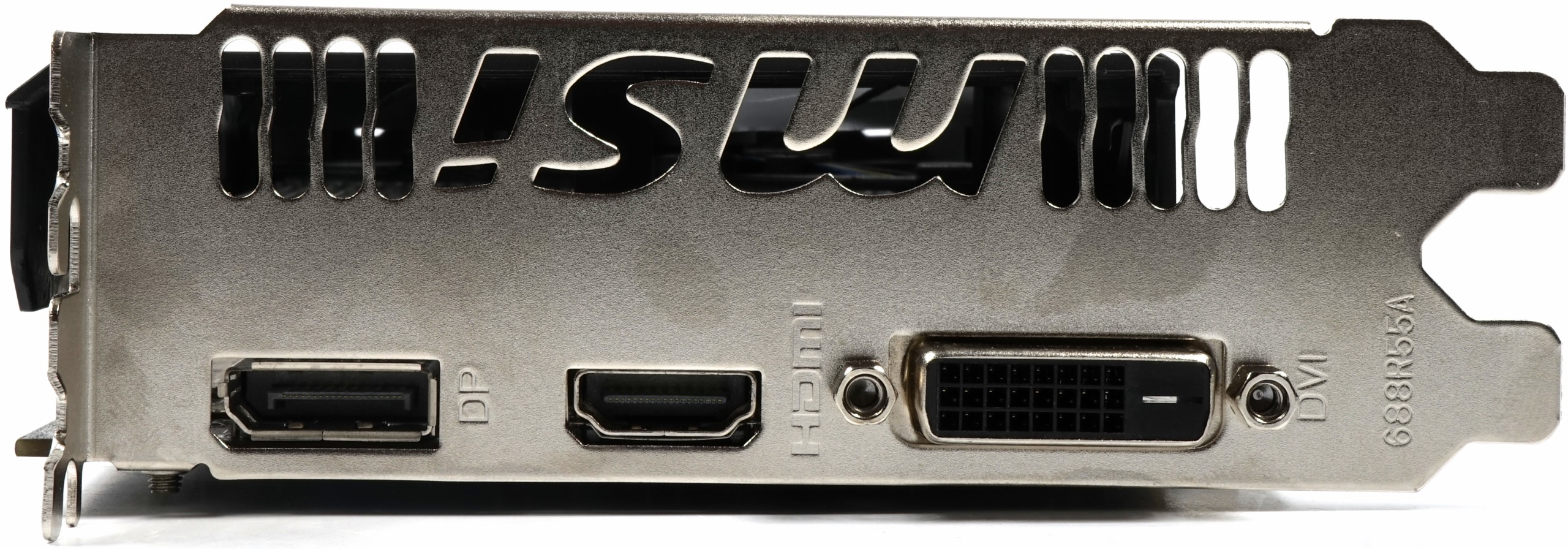 |
Board layout
With such a small card, nothing can actually go wrong, as here too. The technical implementation is unexcited and simple knitted, the layout has been tidied up and designed without tricks.
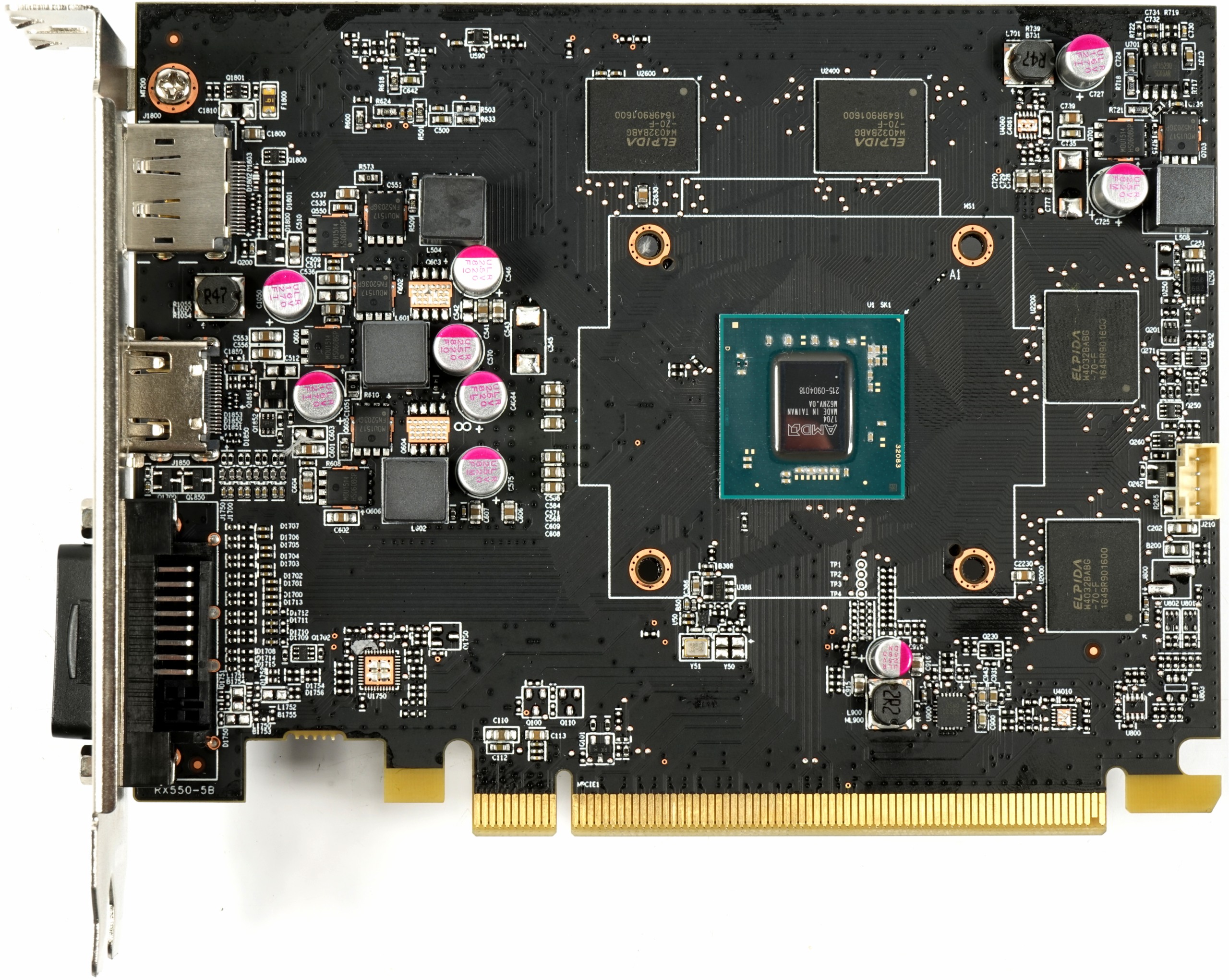
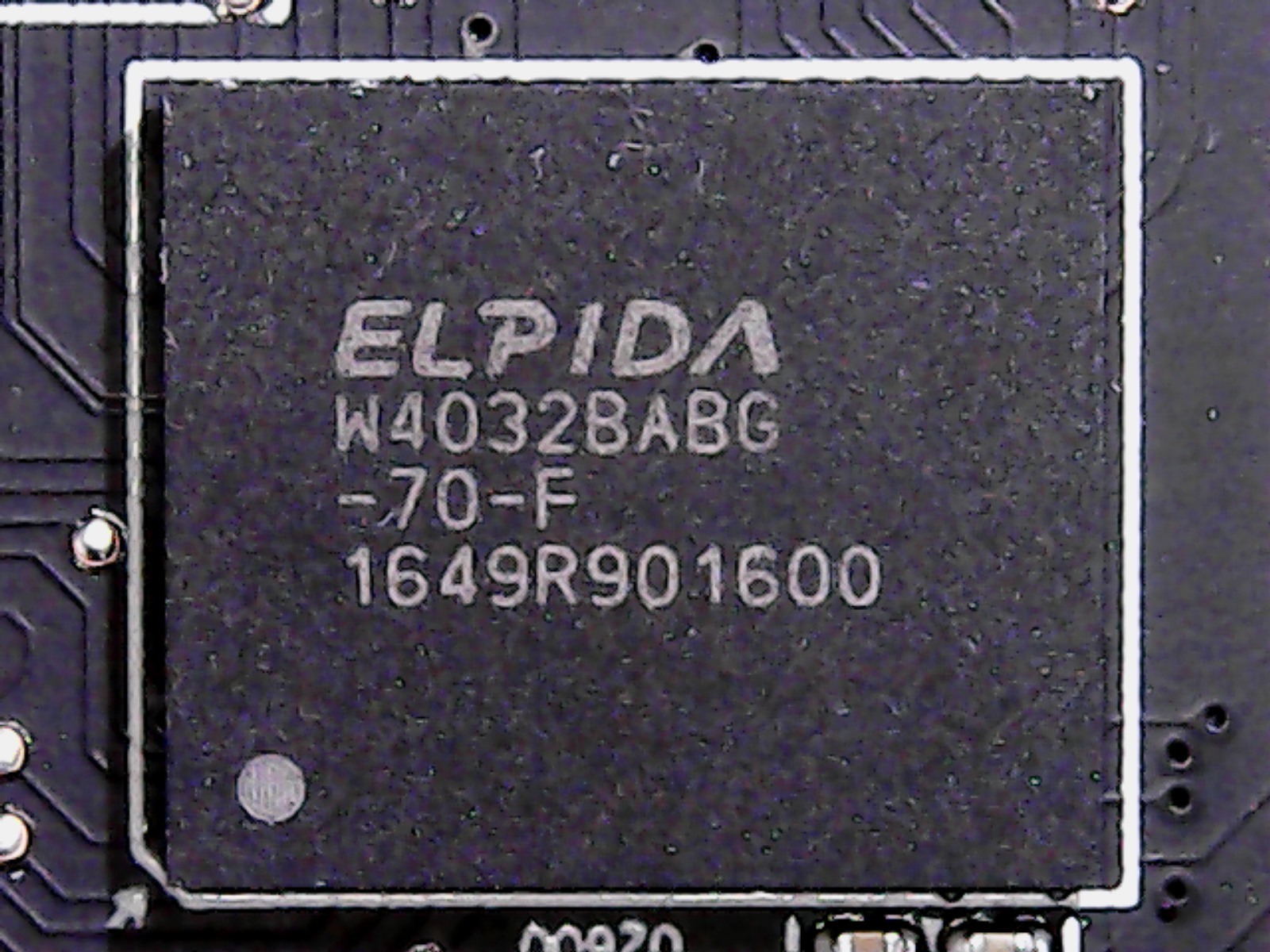
The memory comes on this map of Elpida. The built-in W4032BABG-70-F is four 4-GBit modules (16x 256 MBit), which reach a maximum of 1750 MHz and have already been found on some other board partner cards, such as the GeForce GTX 970 of some manufacturers. However, there is not much overclocking margin with this memory, especially since the memory is not actively cooled and Elpida modules are not exactly due to robustness when exceeding the temperatures specified in the specifications. have been noticed.
The power supply of the GPU is almost oversized with three phases generated by a Richtek RT3662AC. The chip is interesting in that you would rather suspect it on mobile AMD motherboards than on a graphics card. But already includes three gate drivers, so this further simplifies the setup.
For each phase, MSI relies on one MDU1514 for the high-side and one MDU1517 for the low-side, both from Magna Chip. These are solid 30A models, which still have sufficient reserves even uncooled. We estimate the clock of the VR to be well below 400 KHz, which should be very good for the temperatures of the VRM.
 |
 |
As coils, the GPU's voltage converters as well as the one for memory are simple, encapsulated ferrite core coils, where the shells are aligned upright, as the installation height does not matter. Simple polymer capacitors complete the image.
For the power supply of the memory, MSI relies on a small uP1529, which controls the one phase, which in turn was realized with a MDU1514 and MDU1517 from Magna Chip.
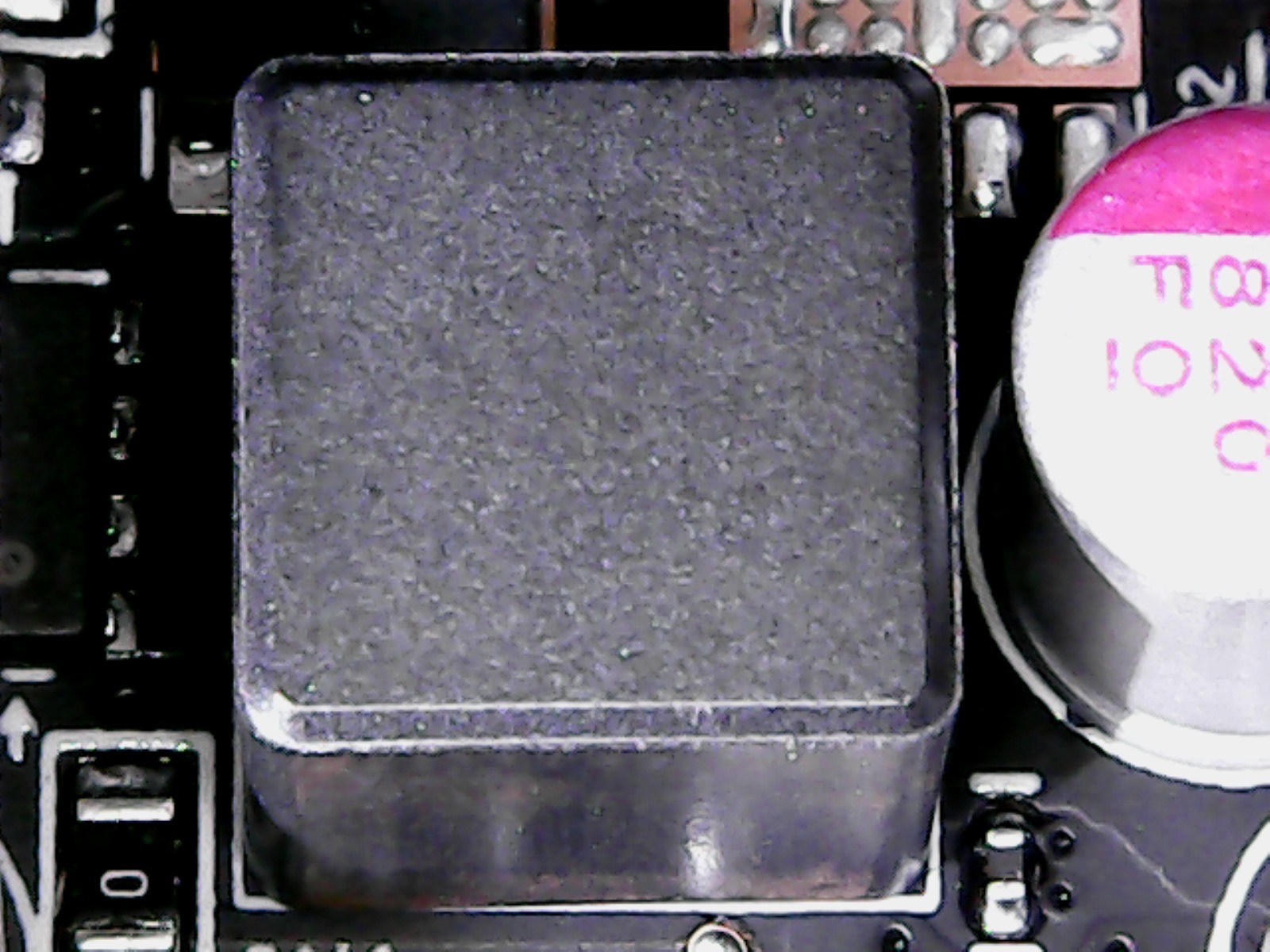 |
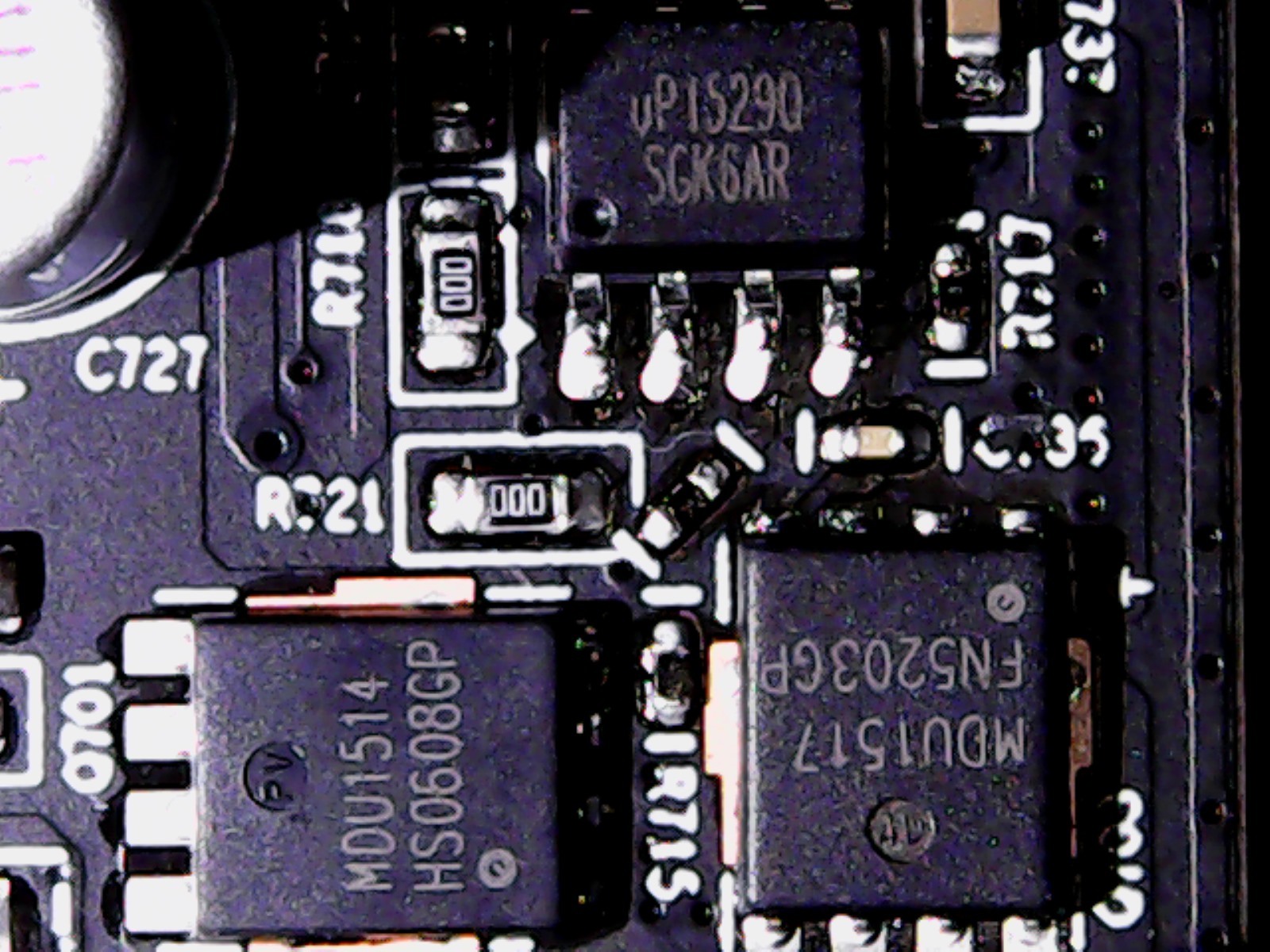 |
Radiator construction
There is hardly anything to write about, because the small, only 120 gram cooler made of strand aluminium is completely secretive. The fan is not a real quiet era with a rotor diameter of 85 mm and the 11 rotor blades, but there are worse things.
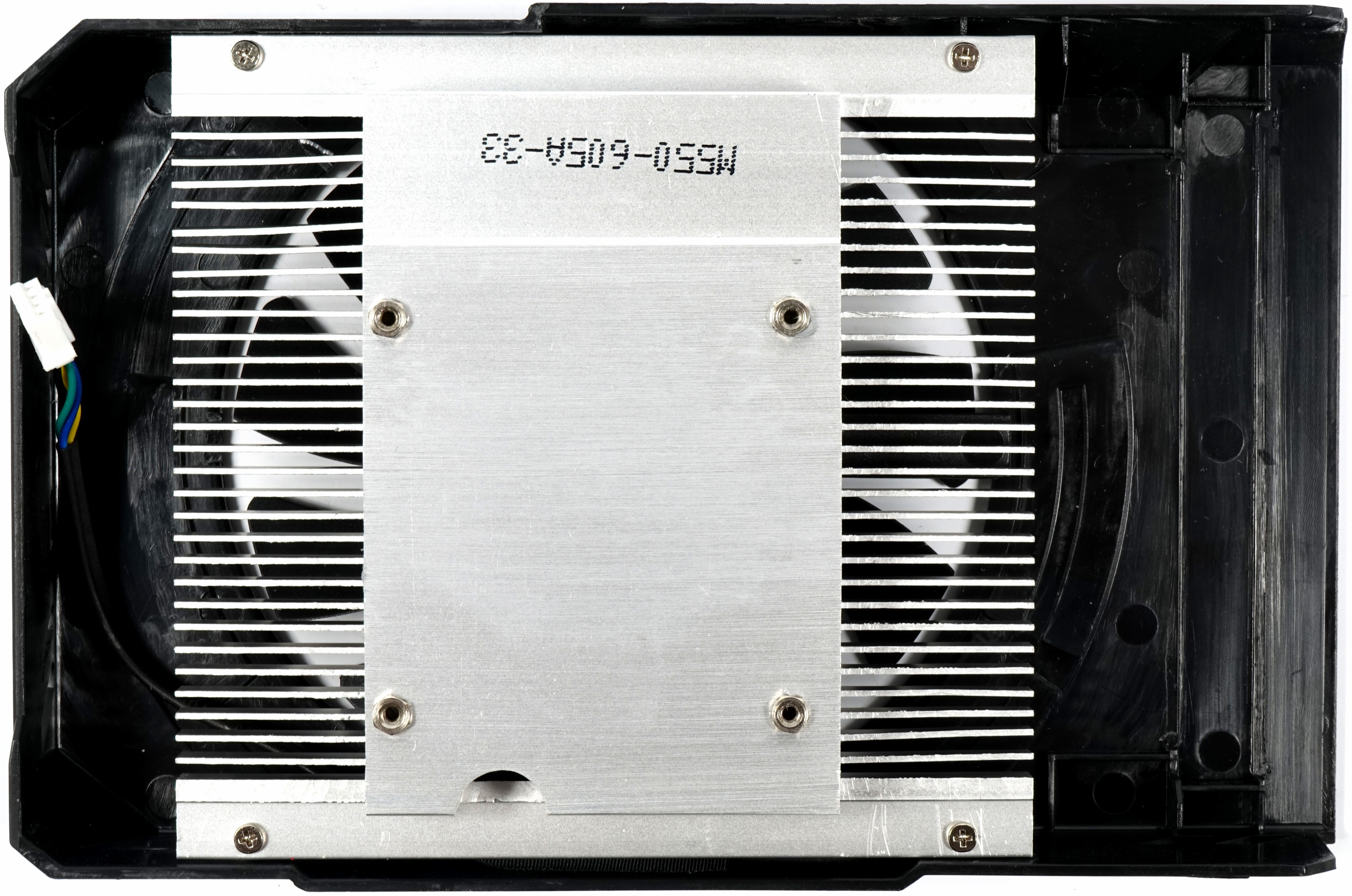































Kommentieren